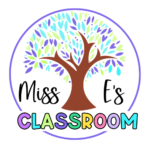Teaching English (EFL) to Preschoolers: Nurturing Young Minds with Playful Learning

Teaching English as a Foreign Language (EFL) to preschool children is a unique journey filled with endless opportunities for creativity and joy for students and teachers. At this tender age, children are like sponges, absorbing languages with remarkable ease. For this reason, we must expose them to the best quality material and a wide variety of resources. As educators, we have the privilege of shaping their early language experiences, making learning both fun and practical; how? First, we should NOT do the same as we do for primary classes. We must understand that very young learners (VYL) learn differently, so copying and pasting the same methodology, techniques, and resources is a big mistake. But let’s start with the biggest question.
Benefits of Early EFL Education for Preschoolers?
Research shows that early exposure to a second language can enhance cognitive abilities, improve problem-solving skills, and even foster greater cultural awareness. For preschoolers, learning English through play and interaction is not just effective—it’s essential!
-
Language Absorption: Very young children have a natural ability to absorb new languages effortlessly. Their brains are wired to quickly pick up sounds, patterns, and vocabulary, making this the perfect time to introduce a second language.
-
Cognitive Development: Learning a new language can enhance cognitive development. It boosts memory, problem-solving skills, and even creativity. These benefits extend beyond language learning, impacting overall academic performance.
-
Cultural Awareness: Early language learning can foster a sense of cultural awareness and empathy. It opens children’s minds to different cultures and perspectives, promoting inclusivity and understanding from a young age.
For all these reasons, it’s not a bad idea to start early, but of course, let’s do it right! It’s also a very sensitive age, and they are learning other different things at the same time, so when introducing another language like English, the idea is NOT TO INTERFERE but to be the greatest companion. English at these stages MUST NOT be perceived as a subject but as a vehicle to learn other things.
Teaching very young learners the same way we teach older children (young learners) in english can be a mistake for several reasons:
-
Developmental Differences: Preschoolers are at a different developmental stage compared to older children. They learn best through play, exploration, and sensory experiences, rather than structured lessons and rote memorization.
-
Short Attention Spans: Young children have shorter attention spans. To keep them interested, lessons need to be dynamic and engaging. Incorporating movement, songs, and interactive activities is key.
-
Emotional Needs: Preschoolers thrive in a nurturing environment where they feel safe and supported. A rigid academic approach can be intimidating and counterproductive. Building a warm, encouraging atmosphere is crucial for their confidence and willingness to learn.
-
Learning Through Preschool english games: Play is the primary way young children learn. It’s through play that they explore the world, make sense of new concepts, and develop language skills. Teaching methods should reflect this natural inclination.
By understanding these differences, we can better tailor our teaching methods to suit the needs of very young learners, ensuring that their introduction to English is both enjoyable and effective.

The solution? Creating a Playful Learning Environment 🎨 EFL activities:
-
Include many interactive Games: Incorporate games that encourage movement and interaction. Simple activities like «Simon Says» or «Color Hunt» and much more can introduce vocabulary in a fun way.
-
Storytelling Sessions: Find appealing stories in books that are close to your age interests. Use storytelling to build vocabulary. Encourage children to participate by asking questions and letting them predict what happens next.
-
Music and Songs: Songs are a fantastic tool for language learning. They help with pronunciation, rhythm, and vocabulary retention. Plus, they’re a hit with young learners!
-
Art and Craft Projects: Integrate language learning with creative activities. Crafting can teach colors, shapes, and everyday vocabulary in an engaging manner.
What will you find in Miss E’s classroom? Resources 📚, Tips of my best practices, Freebies & courses (soon)
At Miss E’s Classroom, I’ve developed resources that are tried and tested in real classrooms. Each activity is designed to be engaging and educational, tailored specifically for very young learners (VYL) & young learners (YL). From printable games to interactive lesson plans, my resources aim to make your teaching experience as enjoyable as it is effective.
Join Our Community!
I invite you to explore these resources and join our vibrant community of educators dedicated to nurturing young minds. Together, we can share ideas and experiences and support each other in this rewarding journey of teaching English to preschoolers through my blog.
Feel free to visit my Teachers Pay Teachers store for more resources, and let’s connect! Your feedback and experiences are invaluable, and I’m excited to learn and grow together with you.
Happy ELTeaching! 💖


